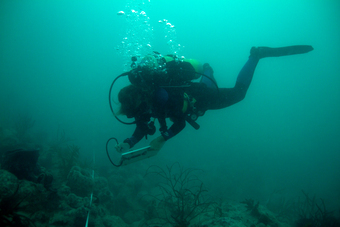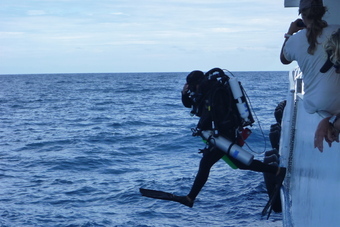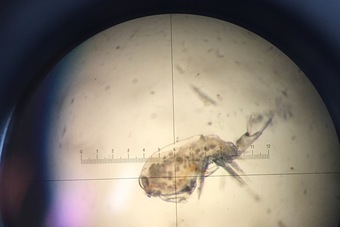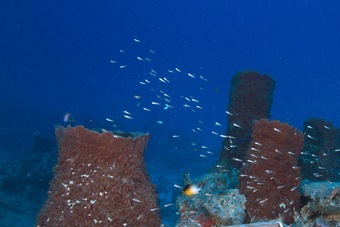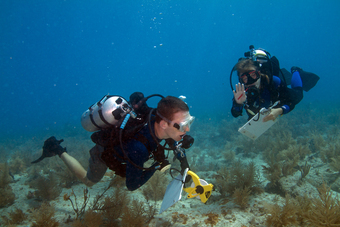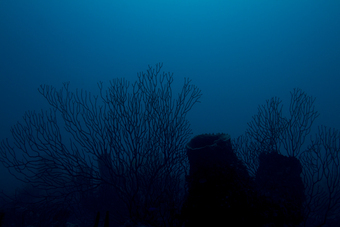Publications:
Goldstein et al. 2016
Global habitat decline may displace organisms from optimal environments, increasing reliance on ecosystems with lower habitat suitability and availability. For coral reef fishes, potentially marginal mesophotic coral ecosystems (~30–150 m) may be buffered from anthropogenic stressors; however, variation in habitat quality across depths can alter population demographics, reproductive output, and subpopulation size, potentially restricting the ability for peripheral habitats to support declining populations through larval supply. This study incorporated population density, benthic habitat, and depth-stratified population demographics to assess bicolor damselfish (Stegastes partitus) subpopulation reproductive output from a broad geographic region encompassing the known depth distribution of the species, including coral reefs in the Florida Keys (0–35 m depths) and mesophotic reefs (~60–90 m) at Pulley Ridge (PR) on the west Florida Shelf. Results indicated that densities of bicolor damselfish peaked in mid-shelf (10–20 m) and deep-shelf (20–30 m) habitats, and subpopulation sizes and reproductive output peaked at mid-depths (10–20 m) in the Florida Keys and declined as depth increased. Subpopulation egg production was affected by differences in demographics across depths, including fish size, sex ratios, and a lower probability and frequency of spawning in deeper habitats. Despite low population densities on mesophotic reefs, the expansive reef area at PR resulted in an estimated subpopulation size that comprised ~14% of the population in the study region, and ~9% of the total reproductive output, indicating that peripheral mesophotic reefs may be sources of larvae that can subsidize declining populations. Larval dispersal and population connectivity models used to inform ecosystem management should incorporate spatially explicit demographics across depth distributions and habitat availability that have substantial effects on egg production and larval supply.
0- 81 m
Mesophotic “mentions”
43 x (total of 8589 words)
Classification
* Presents original data
* Focused on 'mesophotic' depth range
* Focused on 'mesophotic coral ecosystem'
Fields
Connectivity
Ecology
Reproduction
Focusgroups
Fishes
Locations
USA - Pulley Ridge
Platforms
Remotely Operated Vehicle (ROV)
SCUBA (open-circuit or unspecified)



